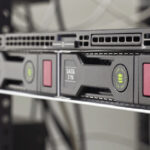File Transfer Protocol (FTP) remains a cornerstone for transferring files between a client and a server. To establish a successful FTP connection and ensure seamless data transfer, understanding the role of the FTP port number is crucial. Ports act as virtual doorways, enabling communication between devices on a network. In the context of FTP, these ports are specifically designated to manage different aspects of the file transfer process. Knowing the correct Ftp Server Port Number is essential for anyone looking to effectively utilize FTP for file management.
Decoding FTP Ports: The Essentials
In the realm of networking, an IP address pinpoints a specific server on the internet. However, to interact with particular applications or services on that server, port numbers come into play. Think of an IP address as a building address, and the port number as an apartment number within that building, directing you to the right service. For FTP, these port numbers are within the range of 0 to 65535, with certain ports reserved for specific functions.
Default FTP Port: Port 21
When discussing standard, unencrypted FTP connections, port 21 is the universally recognized default control port. This is the port that your FTP client will attempt to connect to initially. Port 21 is responsible for command and control traffic, essentially managing the FTP session. It’s the channel through which your client sends commands like LIST (to view files) or RETR (to download files) and receives server responses.
While port 21 is the primary control port, the story of FTP ports doesn’t end there. Historically, FTP utilizes two ports: port 21 for control and port 20 for data transfer in active mode.
Port 20 and 21: Control and Data Ports in Detail
FTP, in its active mode, traditionally employs both port 20 and 21. Port 21, as mentioned, serves as the control port, initiating and managing the connection. Port 20, on the other hand, is designated as the data port.
Here’s how it works in active FTP:
- Control Connection (Port 21): The FTP client initiates a connection to the server on port 21. This connection remains open throughout the FTP session, handling commands and responses.
- Data Connection (Port 20): When data transfer is required (e.g., downloading a file), the server initiates a new connection back to the client from its port 20 to a port specified by the client.
This active mode requires the client to be able to accept incoming connections on port 20, which can sometimes be problematic with firewalls and Network Address Translation (NAT).
Passive FTP and Port Ranges
To overcome the firewall and NAT traversal issues associated with active FTP, passive FTP mode was introduced. In passive mode, both the control and data connections are initiated by the client, simplifying firewall configurations.
Here’s how passive FTP uses ports:
- Control Connection (Port 21): Similar to active mode, the client first establishes a control connection to the server on port 21.
- Data Connection (Random High Port): When a data transfer is needed, instead of the server connecting back to the client on port 20, the server tells the client to connect to a random, high-numbered port for the data connection. This port is dynamically chosen by the server from a predefined range, typically within 60000 – 65535 or a similar range configured by the server administrator.
Passive FTP is generally more firewall-friendly as it is always the client initiating connections, making it the more commonly used mode in modern FTP applications.
Conclusion: FTP Port Numbers – Key to File Transfer
Understanding the FTP server port number is fundamental for anyone working with FTP. While port 21 serves as the primary control port for initiating FTP sessions in both active and passive modes, the data port differs based on the FTP mode. Active FTP uses port 20, while passive FTP utilizes a dynamically assigned high-numbered port from the server. By grasping these port distinctions, you can troubleshoot connection issues and ensure smooth and efficient file transfers using FTP.

